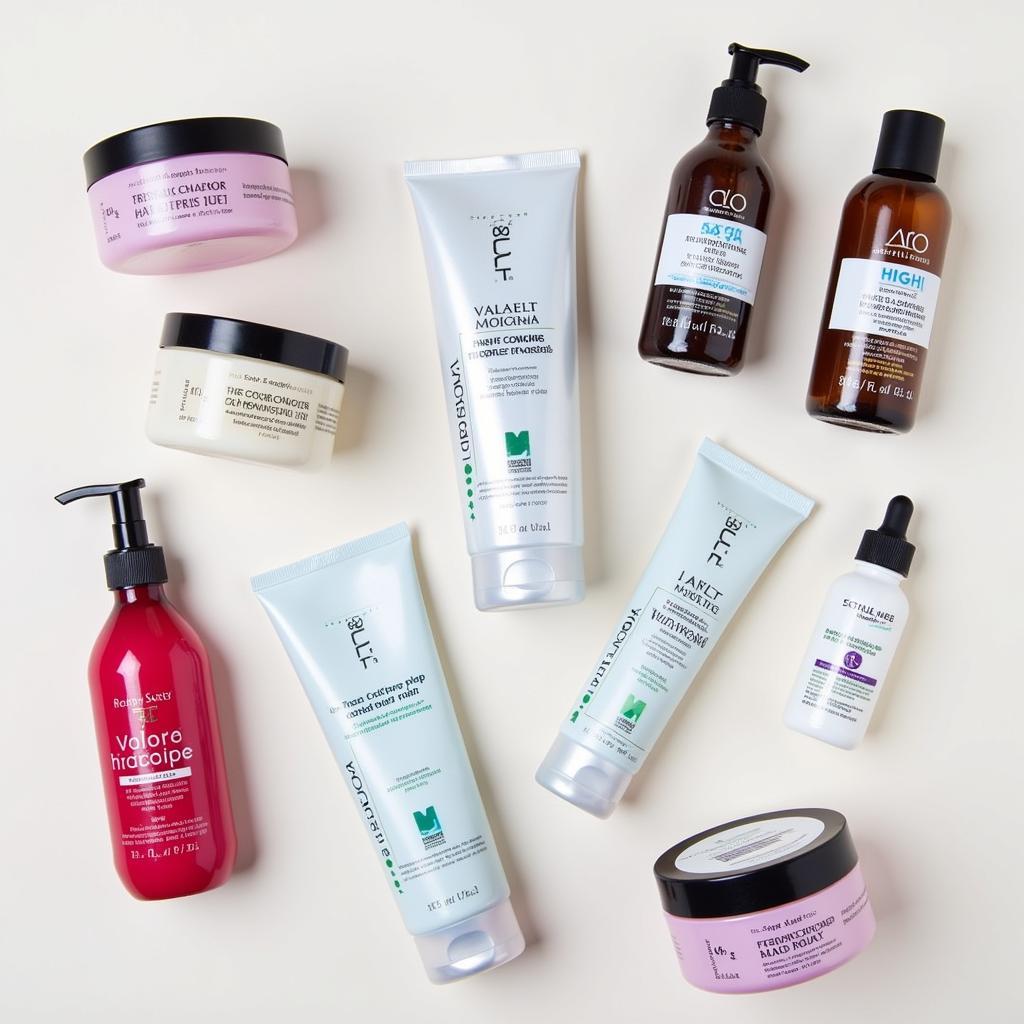Permanent hair color can dramatically transform your look, but it’s important to understand the potential impact on your hair health. While achieving vibrant and long-lasting color is tempting, the process can indeed cause damage if not approached with care.
 Permanent hair color damage
Permanent hair color damage
Understanding Permanent Hair Color
Permanent hair color works by penetrating the hair shaft and altering its natural pigment. This process involves:
- Ammonia: This alkaline agent lifts the hair cuticle, allowing the color molecules to enter the cortex.
- Peroxide: This developer oxidizes the melanin in your hair, removing your natural color and making way for the new shade.
While effective, these chemicals can weaken the hair structure, leading to dryness, breakage, and dullness.
Factors Influencing Damage
The extent of damage from permanent hair color varies depending on several factors:
- Hair type: Fine or damaged hair is more susceptible to damage than coarse, healthy hair.
- Initial hair condition: Hair that’s already dry or chemically treated is at higher risk.
- Frequency of coloring: Frequent color treatments, especially bleaching, can significantly weaken the hair shaft.
- Color choice: Lighter shades require more processing and can be more damaging than darker shades.
- Aftercare routine: Using color-safe products and deep conditioning treatments can help minimize damage and maintain hair health.
 Hair color aftercare products
Hair color aftercare products
Minimizing Damage
While permanent hair color inherently involves some level of damage, you can take steps to minimize its impact:
- Consult a professional: A skilled stylist can assess your hair type, condition, and desired color to recommend the least damaging approach.
- Space out color treatments: Allow sufficient time between sessions for your hair to recover.
- Opt for highlights or lowlights: These techniques involve coloring only sections of hair, minimizing overall damage.
- Use color-safe products: Choose shampoos and conditioners formulated for color-treated hair to prevent fading and dryness.
- Deep condition regularly: Replenish moisture and strengthen hair with deep conditioning masks or treatments.
- Protect from heat styling: Excessive heat can further damage color-treated hair. Use heat protectants and limit styling frequency.
Alternatives to Permanent Color
If you’re concerned about damage, consider alternatives to permanent hair color:
- Demi-permanent color: Is demi permanent hair color damaging? This option deposits color without lifting the cuticle, resulting in less damage but also a shorter lifespan.
- Semi-permanent color: Is semi permanent color damaging to hair? This type of color gradually washes out over several washes, offering a temporary but less damaging option.
- Hair gloss: A gloss enhances shine and refreshes color without altering the hair’s natural pigment.
- Natural dyes: Henna and other plant-based dyes offer a gentler alternative, though the color range is limited.
Signs of Hair Damage
It’s crucial to recognize the signs of hair damage:
- Excessive dryness: Hair feels rough, brittle, and lacks moisture.
- Breakage and split ends: Hair strands snap easily, leading to flyaways and uneven lengths.
- Dullness and lack of shine: Hair appears lifeless and lacks its natural luster.
- Tangling and matting: Damaged hair cuticles create friction, making it prone to tangles.
- Increased hair fall: While some shedding is normal, excessive hair loss can indicate damage.
Conclusion
While permanent hair color can be damaging, understanding the risks and taking preventive measures can help you enjoy vibrant color while maintaining healthy hair. Consider your hair type, color goals, and lifestyle to make informed choices. Consulting a professional stylist is invaluable for minimizing damage and achieving the best possible results.
FAQs
1. Can I color my hair at home to minimize damage?
While home coloring kits are readily available, it’s generally recommended to seek professional help, especially for permanent color. Stylists have the expertise to assess your hair type and condition, choose the appropriate products, and apply the color correctly to minimize damage.
2. How long should I wait to color my hair again after a permanent color treatment?
It’s generally advised to wait at least 6-8 weeks between permanent color sessions to allow your hair to recover. However, the ideal waiting period depends on your hair condition and the type of color treatment.
3. Can I perm my hair after coloring it?
It’s best to avoid perming color-treated hair, as both processes involve chemicals that can weaken the hair shaft. If you’re considering both treatments, consult a stylist for advice on the safest approach. Can you perm color treated hair?
4. What’s the difference between a hair rinse and a hair dye?
What color is rinse? A hair rinse is a temporary color treatment that coats the hair shaft without penetrating it. It washes out easily and causes minimal damage. In contrast, hair dye penetrates the hair shaft to deposit color, resulting in a more permanent change.
5. How can I find the best hair color for my brown hair?
Choosing the right hair color for brown hair depends on your skin tone, desired shade, and the level of commitment you’re comfortable with. What hair color goes with brown hair? Consider consulting a stylist for personalized advice.
Need assistance with your hair color journey? Contact us at Phone Number: 0373298888, Email: [email protected], or visit us at 86 Cau Giay, Hanoi. Our dedicated customer care team is available 24/7 to assist you.


